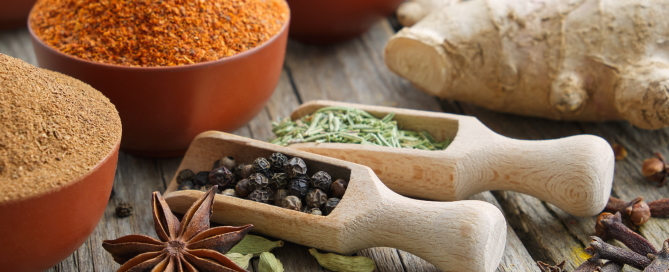Vegan Recipe 101: How To Deliciously Spice Up Your Mealtimes
Eating a vegan diet doesn’t mean sacrificing taste or variety. There are many delicious vegan recipes out there that will tantalize your taste buds and add some much-needed spice to your mealtimes. Whether you are looking for hearty meatless main dishes, mouthwatering sides, sweet desserts, or light salads — this post has you covered! Discover all the savory vegan recipes that will have you licking your lips with delight.
Introduction to Veganism
If you’re thinking about switching to a vegan diet or are simply looking for some delicious new vegan recipes to add to your repertoire, you’ve come to the right place. Veganism is a lifestyle choice with many benefits. Not only is it kinder to animals, but it’s also better for the environment and your health.
Of course, one of the main concerns people have when considering veganism is whether or not they’ll be able to enjoy their food as much as they do now. But with our collection of mouth-watering recipes, we guarantee that you won’t even miss the meat!
Benefits of Eating Vegan
If you are thinking of switching to a vegan diet or are simply looking for some delicious vegan recipes to add to your meal rotation, you have come to the right place. While there are various reasons why someone might choose to eat a vegan diet, including ethical and environmental concerns, weare focusing on the health benefits in this article.
A vegan diet can help reduce obesity, the risk of heart disease, and diabetes. It can also help control your blood pressure and lower cholesterol. Plus, eating more plants has been linked with a reduced risk of certain types of cancer. If that is not enough to convince you, plant-based diets have also been shown to boost energy levels and improve moods.
So what are you waiting for? Get cooking with one of these delicious vegan recipes!
Common Ingredients For a Vegan Recipe
There are a variety of vegan ingredients that can be used to create delicious and healthy meals. Below are some of the most common vegan ingredients:
- Tofu: Tofu is a versatile vegan ingredient that can be used in various dishes. It is high in protein and low in calories, making it an ideal choice for those looking to add more protein to their diet.
- Beans: Beans are a great source of plant-based protein and fiber. They can be used in various dishes, such as soups, stews, salads, and burritos.
- Lentils: Lentils are another great source of plant-based protein and fiber. They can be used in various dishes, such as soup, curry, rice dishes, and wraps.
- Nuts and Seeds: Nuts and seeds are a great source of plant-based protein, healthy fats, and fiber. They can be used in various dishes, such as salads, stir-fries, and oatmeal, or eaten as a snack.
Vegan Recipes for Breakfast, Lunch, and Dinner
If you’re looking for some delicious vegan recipes to spice up your mealtimes, look no further! Here are some fantastic recipes for breakfast, lunch, and dinner that are sure to please everyone at the table.
For breakfast, why not try a scrumptious vegan version of eggs Benedict? This recipe features poached eggs, avocado, and tomato on a bed of wilted spinach, all topped with a flavorful hollandaise sauce. Yum!
For lunch, how about a hearty quinoa and black bean burger? These burgers are packed with flavor and nutrition, and they’re perfect for grilling or cooking on the stovetop. Serve them on whole wheat buns with your favorite toppings.
And for dinner, you can go right with a classic vegan lasagna. This dish is always a hit, and it’s so easy to make! Layers of pasta, tofu “ricotta,” and marinara sauce combine to create a mouthwatering meal that everyone will love.
Desserts, Snacks, and Beverages
There are endless vegan recipes for delicious desserts, snacks, and beverages. Here are some of our favorites:
For dessert, how about some Vegan Chocolate Cake or Vegan Vanilla Cupcakes? Or, if you’re in the mood for something fruity, try this Vegan Strawberry Rhubarb Crisp.
Looking for a tasty snack? These Vegan Zucchini Chips or Vegan Cauliflower Wings are perfect for munching on. And these easy Vegan Energy Balls make a great on-the-go snack.
Thirsty? Make yourself a refreshing Vegan Iced Tea or a healthy Green Smoothie. Or, if you’re feeling indulgent, whip up a Chocolate Peanut Butter Milkshake!
Tips for Eating Out as a Vegan
As a vegan, you might feel left out when eating out. Most restaurants cater to meat-eaters and only have a few (if any) vegan-friendly options. But don’t despair! There are plenty of ways to ensure you can still enjoy a nice meal, even if you’re vegan. Here are some tips:
- Call ahead to the restaurant and ask about their vegan options. This way, you’ll know what to expect and can plan accordingly.
- If the restaurant has no vegan entrees, see if they’re willing to make something special for you. Many chefs are happy to accommodate dietary restrictions, so it always helps to ask.
- Order several side dishes or appetizers instead of an entree. This way, you can cobble together a meal that’s both filling and satisfying.
- Get creative with your order. For example, if the only vegan option is a salad, ask if they can add some grilled veggies or avocado for extra protein and healthy fats.
- With these tips in mind, you’ll have a delicious vegan meal the next time you eat out!
Eating vegan doesn’t have to be bland or tasteless. With these delicious vegan recipes, you can enjoy tasty and satisfying meals without compromising on flavor. Whether you’re a full-time vegan or just looking for some new ideas to try out, these recipes are sure to add a little excitement to your mealtimes. So please give them a go and make every meal something special!

















